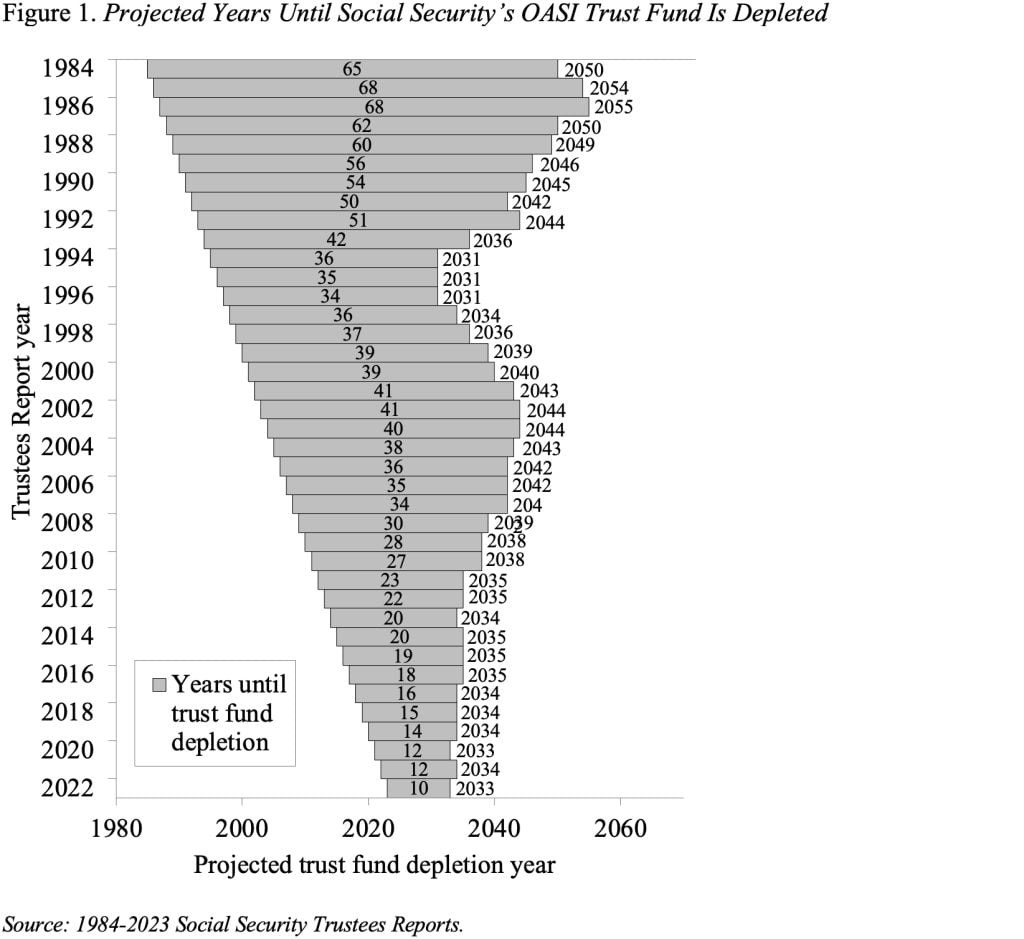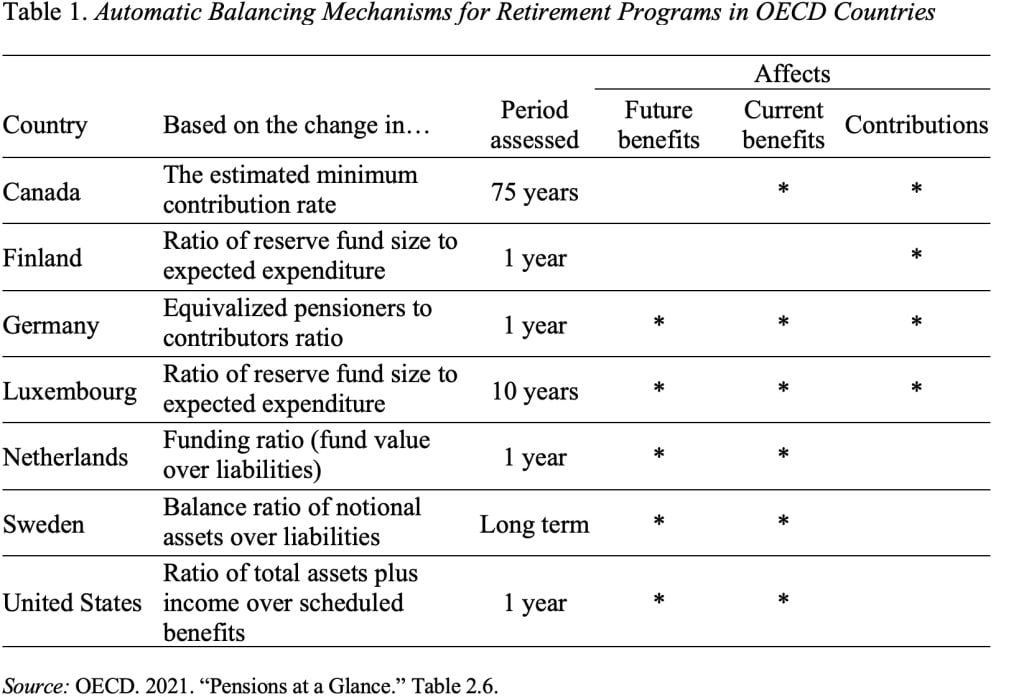There’s a backstop, however it’s a draconian one.
When the horse-trading begins on a bundle to revive monetary steadiness to the Social Safety program, one merchandise that ought to be thought-about is a few type of computerized adjustment mechanism. Whereas the monetary implications of the last word bundle might be based mostly on one of the best assumptions relating to wages, costs, and demographics on the time, these assumptions could not pan out, and the system would possibly as soon as once more be heading for deficits. And U.S. policymakers are horrible at addressing Social Safety’s monetary issues earlier than we’re about to fall off a cliff.
The final main piece of Social Safety laws was enacted in 1983 – precisely forty years in the past. At the moment, this system was inside months of being unable to pay full advantages. In the present day, we face the prospect of a 23-percent profit lower in 2033 when the belongings within the Previous Age and Survivors Insurance coverage (OASI) belief fund are depleted.
Policymakers have recognized for many years that the OASI belief fund can be exhausted within the 2030s (see Determine 1) however have taken no motion. Not performing has prices. It undermines Individuals’ confidence within the spine of our retirement system and causes some to say their advantages early, hoping that these on the rolls could also be spared future cuts. Extra importantly, delaying motion means the eventual adjustments have to be extra abrupt, and fewer generations take part within the repair.

One solution to keep away from repeated crises and restore confidence within the monetary stability of the Social Safety program is for any bundle of options to incorporate a mechanism that robotically adjusts revenues or advantages if shortfalls emerge. As of the latest OECD report on retirement applications, many nations have mechanisms that hyperlink the parameters of their applications to adjustments in both financial or demographic developments, and 7 have computerized balancing mechanisms explicitly designed to make sure that the retirement plans are totally financed (see Desk 1).

As you may see, the USA is included on this record. We, in truth, do have a mechanism to make sure that the system is totally funded. When the belief fund is depleted, Social Safety should lower advantages to the extent of incoming revenues – therefore, the projected 23-percent profit lower in 2033. This mechanism is a really draconian solution to spur motion – and it doesn’t appear very efficient, besides at creating nice nervousness amongst older employees and retirees.
The Canadians have a way more civilized strategy – maybe one that might function a mannequin for the USA. It’s a backstop association that’s activated solely within the absence of a political settlement. Mechanically it really works as follows. Each three years, the Chief Actuary estimates the minimal contribution price wanted to finance the system over 75 years. If the required price exceeds the legislated price and policymakers can not agree on an answer, the backstop kicks in. In that case, the cost-of-living adjustment is frozen, and contribution charges are elevated by 50 p.c of the distinction between the legislated and the required price for 3 years till the Chief Actuary’s following report. The mechanism thus avoids uncertainty concerning the system’s monetary stability over time if policymakers fail to behave.
We don’t must undertake the specifics of the Canadian backstop mechanism, however together with some computerized adjustment within the face of inaction would enhance confidence within the long-term stability of our Social Safety program.

